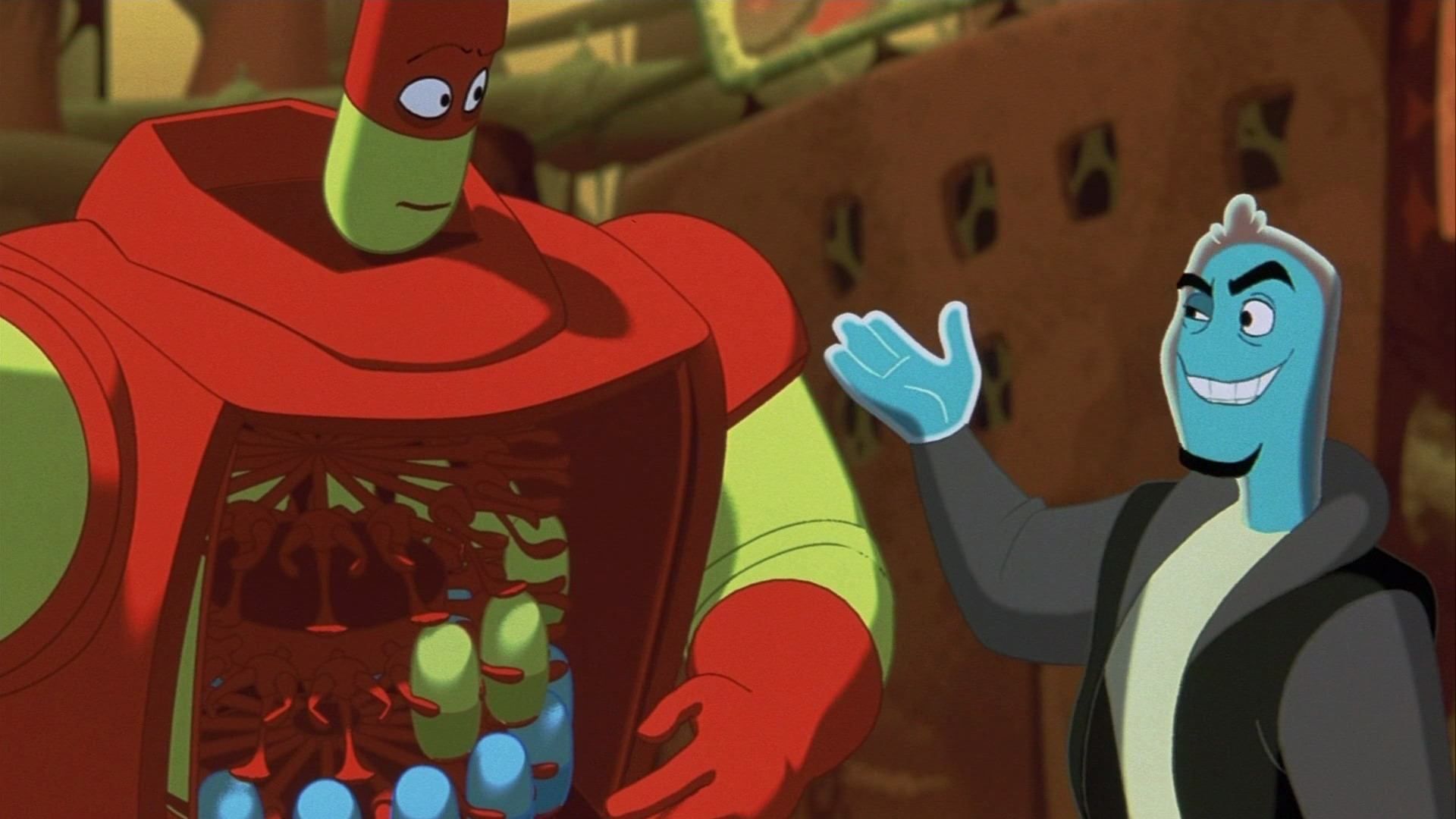
Unpacking Disease in Osmosis Jones: A Deep Dive into the Animated World of Illness
Osmosis Jones, the 2001 animated and live-action hybrid film, takes viewers on a fantastical journey inside the human body, personifying cells and diseases in a vibrant, action-packed narrative. The film cleverly illustrates the complex workings of the immune system while simultaneously depicting the devastating effects of disease. Understanding the specific portrayals of disease in Osmosis Jones provides valuable insight into the film’s educational value and its ability to make complex biological processes accessible to a wider audience. This article will delve into the various types of disease depicted, their impact on the film’s narrative, and the accuracy (or lack thereof) in their representation.
The Animated World Within: A Biological Battleground
The film primarily takes place within the body of Frank Detorre, a zookeeper with unhealthy habits. The anthropomorphic cells within Frank’s body work tirelessly to maintain his health, while the diseases attempt to wreak havoc. This internal world, known as the City of Frank, is a bustling metropolis where white blood cells are police officers, and red blood cells are public transportation. This imaginative setting provides a unique backdrop for exploring the dynamics of disease and immunity.
Thrax: A Deadly and Charismatic Villain
The main antagonist of Osmosis Jones is Thrax, a deadly and highly contagious virus. Thrax is portrayed as a charismatic and ruthless villain who seeks to become the most devastating disease in history. He is a personification of a particularly virulent strain of bacteria, though his exact nature is never explicitly stated. Thrax’s primary goal is to kill Frank, proving his superiority over other diseases and establishing his legacy. His methods involve manipulating and corrupting other cells within Frank’s body, leading to a rapid decline in Frank’s health. Thrax embodies the aggressive and destructive nature of many diseases, highlighting the constant battle waged within our bodies.
The Common Cold: A Minor Inconvenience
In contrast to Thrax, the film also depicts the common cold as a more benign and less threatening disease. While the cold still causes discomfort and inconvenience for Frank, it is ultimately manageable and does not pose a significant threat to his life. This contrast between Thrax and the common cold illustrates the spectrum of disease severity, from mild and self-limiting to life-threatening and requiring aggressive intervention.
Accuracy and Exaggeration: Balancing Entertainment and Education
While Osmosis Jones is primarily an entertainment film, it also incorporates elements of scientific accuracy. The portrayal of white blood cells as immune system defenders is generally accurate, as is the concept of viruses and bacteria invading the body and causing disease. However, the film also takes significant liberties with scientific facts for the sake of storytelling and humor.
For example, Thrax’s ability to kill Frank within a matter of days is an exaggeration of the typical progression of most bacterial infections. While some infections can be rapidly fatal, most diseases take longer to develop and manifest their symptoms. Additionally, the film simplifies the complex interactions between different types of immune cells and the mechanisms by which they fight off disease. [See also: The Science Behind Osmosis Jones] The simplification allows the film to be more accessible to younger audiences, but it also means that some of the scientific details are sacrificed.
The Role of Lifestyle: Frank’s Unhealthy Habits
Osmosis Jones also highlights the importance of lifestyle choices in maintaining health and preventing disease. Frank’s unhealthy habits, such as eating junk food and neglecting hygiene, weaken his immune system and make him more susceptible to disease. This aspect of the film underscores the connection between personal responsibility and overall health, emphasizing that our choices can significantly impact our body’s ability to fight off infection. By portraying Frank as a flawed and relatable character, the film encourages viewers to reflect on their own health habits and make positive changes.
The Impact of Disease on the Narrative: Driving the Plot Forward
Disease is not merely a backdrop in Osmosis Jones; it is the driving force behind the entire narrative. The threat of disease creates conflict, motivates the characters, and ultimately leads to the resolution of the story. Without the presence of Thrax and other diseases, there would be no need for Osmosis Jones and his partner, Drixenol (Drix), to fight for Frank’s health. The film’s plot revolves around the constant struggle between the immune system and the invading pathogens, creating a dynamic and engaging viewing experience. [See also: The Evolution of Animated Medical Dramas]
Osmosis Jones: A Heroic White Blood Cell
Osmosis Jones, the film’s protagonist, is a white blood cell who is constantly battling disease within Frank’s body. He is portrayed as a somewhat reckless and unconventional officer, but he is ultimately dedicated to protecting Frank’s health. Osmosis’s journey throughout the film is driven by his desire to stop Thrax and prevent him from killing Frank. His determination and bravery in the face of disease make him a relatable and inspiring hero.
Drixenol (Drix): The Pharmaceutical Ally
Drixenol, or Drix for short, is a cold pill who joins forces with Osmosis Jones to combat Thrax. Drix represents the pharmaceutical intervention in the fight against disease. He is a powerful and effective weapon, but he also has limitations. Drix’s presence in the film highlights the role of medication in treating disease and the importance of combining medical intervention with a healthy lifestyle. Together, Osmosis and Drix represent a multifaceted approach to fighting disease.
The Legacy of Osmosis Jones: Educating and Entertaining
Osmosis Jones has had a lasting impact on popular culture, introducing many viewers to the basic concepts of immunology and disease in an entertaining and accessible way. The film’s imaginative portrayal of the human body and its internal battles has resonated with audiences of all ages. While the film is not a perfect representation of scientific reality, it serves as a valuable educational tool, sparking curiosity about the workings of the human body and the importance of maintaining health. [See also: Animated Films with a Focus on Health and Wellness]
Beyond the Film: Educational Resources and Discussions
The film has also inspired a range of educational resources and discussions about disease and the immune system. Teachers have used Osmosis Jones as a tool to engage students in science lessons, and healthcare professionals have used it to explain complex medical concepts to patients. The film’s ability to make disease relatable and understandable has contributed to its enduring popularity and its positive impact on health literacy.
Conclusion: The Enduring Relevance of Disease in Osmosis Jones
In conclusion, the portrayal of disease in Osmosis Jones is a crucial element of the film’s narrative and its educational value. The film’s depiction of various types of disease, from the deadly Thrax to the common cold, highlights the constant battle waged within our bodies. While the film takes liberties with scientific accuracy for the sake of entertainment, it also provides a valuable introduction to the basic concepts of immunology and the importance of maintaining health. Osmosis Jones remains a relevant and engaging film that continues to educate and entertain audiences about the complexities of disease and the resilience of the human body. The film serves as a reminder of the importance of healthy lifestyle choices and the constant vigilance required to protect ourselves from the ever-present threat of disease. Understanding how disease is presented in this animated world offers a unique lens through which to appreciate the intricacies of our own biological defenses. The film masterfully uses the concept of disease to drive the plot, develop compelling characters, and ultimately deliver a message about the importance of health and well-being. The presence of disease, in its various forms, is not just a plot device but a central theme that resonates throughout the entire film. The ongoing battle against disease within Frank’s body mirrors the real-life challenges our immune systems face every day, making Osmosis Jones a timeless and thought-provoking cinematic experience. The film’s creative representation of disease makes it an exceptional tool for education and entertainment, fostering a deeper appreciation for the complex mechanisms that keep us healthy and strong. From the aggressive tactics of Thrax to the minor inconveniences of the common cold, the portrayal of disease in Osmosis Jones provides a fascinating and informative glimpse into the microscopic world within us. The film underscores the importance of understanding disease, not just as a medical concept, but as a fundamental aspect of the human experience.

